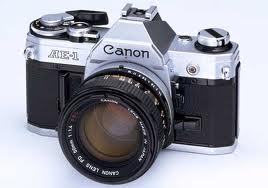Bob's Photography Website
A photograph is usually looked at - seldom looked into. ~ Ansel Adams
HOME | Contact | Ed. Programs | Galleries | Lightroom | Links | Photographic Areas | Smartphones | Tips | Training
Development Of the Modern Camera
The introduction of the Kodak camera in 1888 brought about massive, permanent changes in the world of photography. The Kodak was preloaded at the factory with sufficient film for 100 exposures. When the roll was finished, the entire camera was returned to the factory in Rochester, N.Y., where the film was developed and printed and the camera reloaded. In a single stroke, George EASTMAN had created the class of amateur photographers, those who wanted to take pictures but were unwilling to deal with the darkroom machines of the photographic process.
The sales motto "You press the button, we do the rest" accurately summed up the new system. In 1900 the marketing of Eastman's Kodak Brownie #1 popularized photography even further. At a cost of $1.00 for the camera and 10 cents per roll of film, the Brownie put a basic photographic system within reach of virtually everyone. The continuing improvements of sensitized film products were paralleled by the development of more sophisticated cameras. The first optical rangefinder became available in 1916, and a very high-speed lens, the Ernostar, which had an effective aperture of f/20, appeared on a compact camera in 1924, marking the beginning of the era of natural-light candid photography.
With the introduction in 1938 of the Super Kodak 620, complete automation of camera exposure systems moved a step closer to realization. A very costly snapshot camera, the Kodak 620 was the first to incorporate a completely automated method of exposure control. Only a few of these cameras were made before World War II stopped production, but the Super Kodak 620 indicated what was possible. After the war, miniaturized electronic components made automatic exposure systems commonplace on even the most inexpensive cameras. The process of automating most camera functions was completed in the late 1970s, when the first of what have come to be known as "point and shoot" cameras appeared on the market. These cameras, so simple to use that even beginners can take satisfactory pictures, now dominate the amateur market.
The evolution of camera design in the professional market tends to be a more gradual process. Professional models are available with automatic exposure-control systems, and several advanced professional cameras offer automatic focusing.

